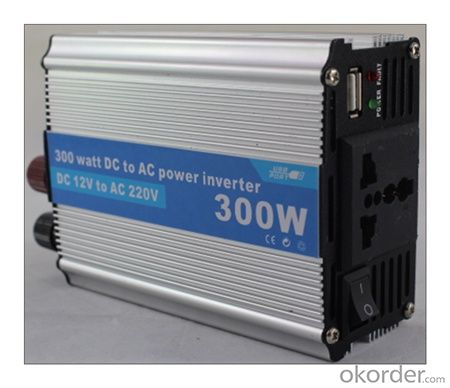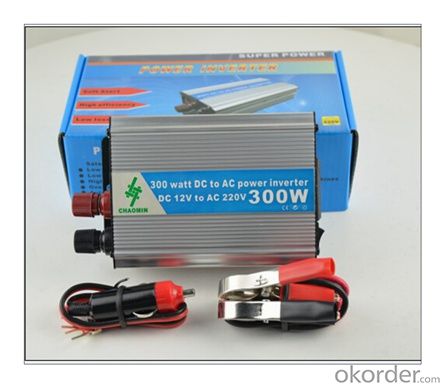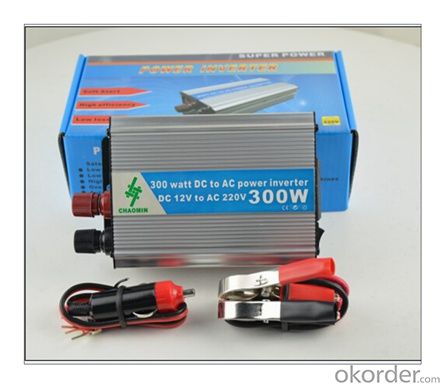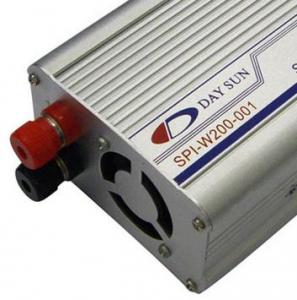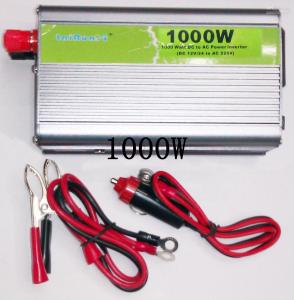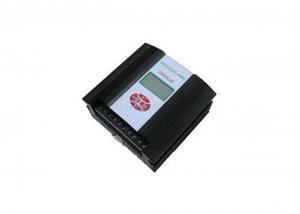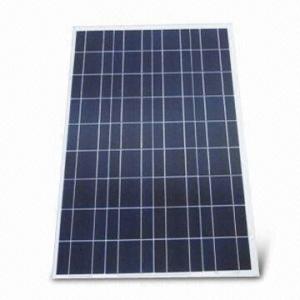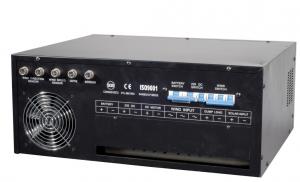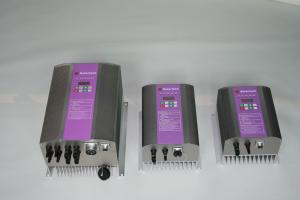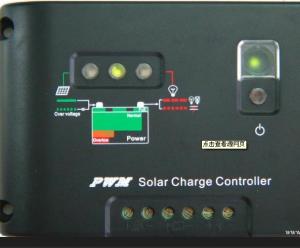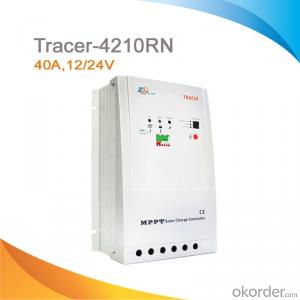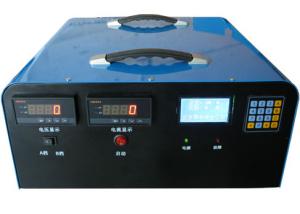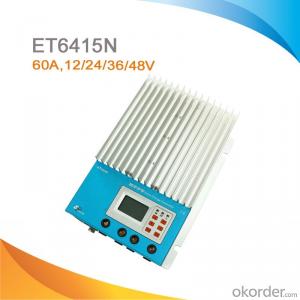Solar Sprinkler Controllers - High Quality Useful 300W Solar Charging Discharging Controller
- Loading Port:
- China main port
- Payment Terms:
- TT or LC
- Min Order Qty:
- 100 unit
- Supply Capability:
- 10000 unit/month
OKorder Service Pledge
OKorder Financial Service
You Might Also Like
1, Product desciption
Inverter circuits designed to produce a variable output voltage range are often used within motor speed controllers.
The DC power for the inverter section can be derived from a normal AC wall outlet or some other source. Control and feedback circuitry is used to adjust the final output of the inverter section which will ultimately determine the speed of the motor operating under its mechanical load.
Motor speed control needs are numerous and include things like: industrial motor driven equipment, electric vehicles, rail transport systems, and power tools. (See related: variable-frequency drive ) Switching states are developed for positive, negative and zero voltages as per the patterns given in the switching Table.
The generated gate pulses are given to each switch in accordance with the developed pattern and thus the output is obtained.
2, Features of the product
Inverters convert low frequency main AC power to higher frequency for use in induction heating.
To do this, AC power is first rectified to provide DC power. The inverter then changes the DC power to high frequency AC power. Due to the reduction in the number of DC Sources employed, the structure becomes more reliable and the output voltage has higher resolution due to an increase in the number of steps so that the reference sinusoidal voltage can be better achieved.
This configuration has recently become very popular in AC power supply and adjustable speed drive applications. This new inverter can avoid extra clamping diodes or voltage balancing capacitors. There are three kinds of level shifted modulation techniques, namely:
The first thing to figure out is the length of road in need of street lights.
This can be a small entrance road only a couple hundred of feet long to miles of streets through an area. Does the area currently have any type of lighting available.
What is the reason for needing street lights in this area
Is the electrical grid already nearby or would you need to call in the power company to bring in electrical lines.
If the electric needs to be brought to the area, how much is this going to cost? Depending on how far the grid electric is from the location of the needed lighting, this can be quite expensive.
How much lighting is needed on the street? Do the lights need to be dark sky compliant.
Do the street lights need to run from dusk to dawn or for only a specified number of hours at night.
Are the street lights able to dim in the middle of the night and still provide enough lighting.
These questions need to be answered before you can decide on how many lights you will need to complete the project.
3, Product Image

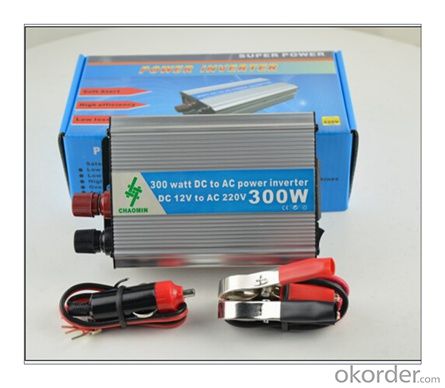
4, Detailed Specification
Specification:
Model | Tracer |
Rated system voltage | 12/24V auto work |
Rated battery current | 40A |
Rated load current | 20A |
Max.battery voltage | 32V |
Max.PV open circuit voltage | 100VDC |
Max.PV input power | 12V 500W, 24V 1000W |
Self-consumption | <10mA(24V) |
Charge Circuit Voltage Drop | ≤0.26V |
Discharge Circuit Voltage Drop | ≤0.15V |
Communication | TTL232 / 8 pin RJ45 |
Temp.compensation | -5mV/℃/2V |
Working temperature | -35℃~+55℃ |
Storage temperature range | -35℃~+80℃ |
Humidity | 10%-90% NC |
Enclosure | IP30 |
Altitude | ≤3000m |
Dimension | 242mm x 169mm x 91mm |
Mounting holes | 180mm x 160mm |
Mounting hole size | Φ5 |
Terminal | 25mm2 |
Weight | 2.05kg |
- Q: Can a solar controller be used with solar panels of different materials?
- Yes, a solar controller can be used with solar panels of different materials. The function of a solar controller is to regulate the flow of energy from the solar panels to the battery or grid, regardless of the material used in the solar panels. The controller's purpose is to ensure optimal charging and prevent overcharging or damaging the battery, irrespective of the panel material.
- Q: How does a solar controller handle overvoltage protection?
- A solar controller handles overvoltage protection by continuously monitoring the voltage level of the solar panel array. If the voltage exceeds a predetermined threshold, the controller activates a protection mechanism, such as diverting the excess energy to a dump load or disconnecting the panels from the system altogether. This safeguards the system from potential damage caused by overvoltage conditions.
- Q: What is the price range for a solar controller?
- The price range for a solar controller can vary depending on the brand, features, and specifications, but generally, they can range from $20 to $200.
- Q: Can a solar controller be used with a solar-powered water filtration system?
- Yes, a solar controller can be used with a solar-powered water filtration system. A solar controller regulates the flow of electricity from the solar panels to the system, ensuring optimal performance and preventing damage to the equipment. It helps to maintain a stable power supply and maximize the efficiency of the water filtration system, making it a crucial component for a solar-powered setup.
- Q: What is the maximum discharge voltage of a solar controller?
- The specific model and manufacturer determine the maximum discharge voltage of a solar controller, which can vary. Generally, the maximum discharge voltage of a solar controller is typically between 12 and 24 volts. It is crucial to avoid surpassing the maximum voltage rating of the connected battery system, as this can result in damage to both the battery and other connected components. It is advisable to consult the manufacturer's product specifications and guidelines for precise information on the maximum discharge voltage of a specific solar controller.
- Q: How does a solar controller prevent damage to the solar panels from electrical faults?
- A solar controller prevents damage to solar panels from electrical faults by continuously monitoring the voltage and current output of the panels. It regulates the flow of electricity from the panels to the batteries or the grid, ensuring that it stays within safe limits. In case of electrical faults such as overvoltage, overcurrent, or short circuits, the solar controller automatically cuts off the power supply to protect the panels from potential damage.
- Q: Can a solar controller be used with a solar-powered office building?
- Yes, a solar controller can be used with a solar-powered office building. A solar controller regulates the flow of electricity from the solar panels to the building's electrical system, ensuring optimal performance and preventing overcharging of batteries. It helps monitor and manage the solar power generated, making it suitable for use in a solar-powered office building.
- Q: Can a solar controller be used with solar-powered remote monitoring systems?
- Yes, a solar controller can be used with solar-powered remote monitoring systems. A solar controller is designed to regulate the charging and discharging of batteries in a solar power system. It ensures that the batteries are charged efficiently and protects them from overcharging or discharging. Therefore, it can effectively control the solar power supply to remote monitoring systems, ensuring reliable and continuous operation.
- Q: Does a solar controller have a built-in light sensor?
- Yes, a solar controller typically has a built-in light sensor. This sensor helps to detect the level of sunlight and adjust the charging or discharging of the battery accordingly.
- Q: What is the maximum load voltage a solar controller can handle?
- The maximum load voltage a solar controller can handle depends on the specific model and its specifications. It is recommended to consult the manufacturer's guidelines or the product manual to determine the maximum load voltage capacity of a particular solar controller.
Send your message to us
Solar Sprinkler Controllers - High Quality Useful 300W Solar Charging Discharging Controller
- Loading Port:
- China main port
- Payment Terms:
- TT or LC
- Min Order Qty:
- 100 unit
- Supply Capability:
- 10000 unit/month
OKorder Service Pledge
OKorder Financial Service
Similar products
Hot products
Hot Searches
Related keywords



